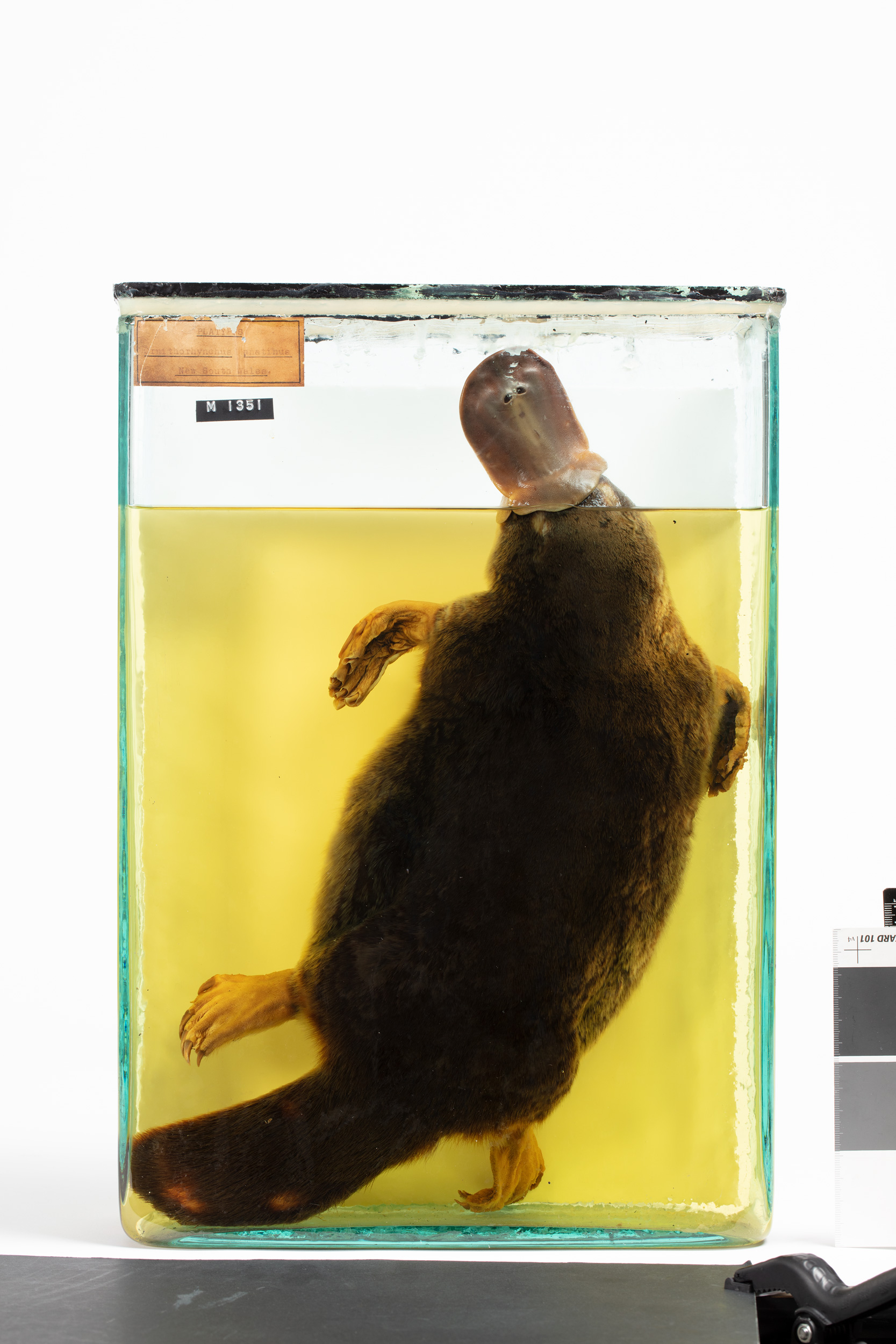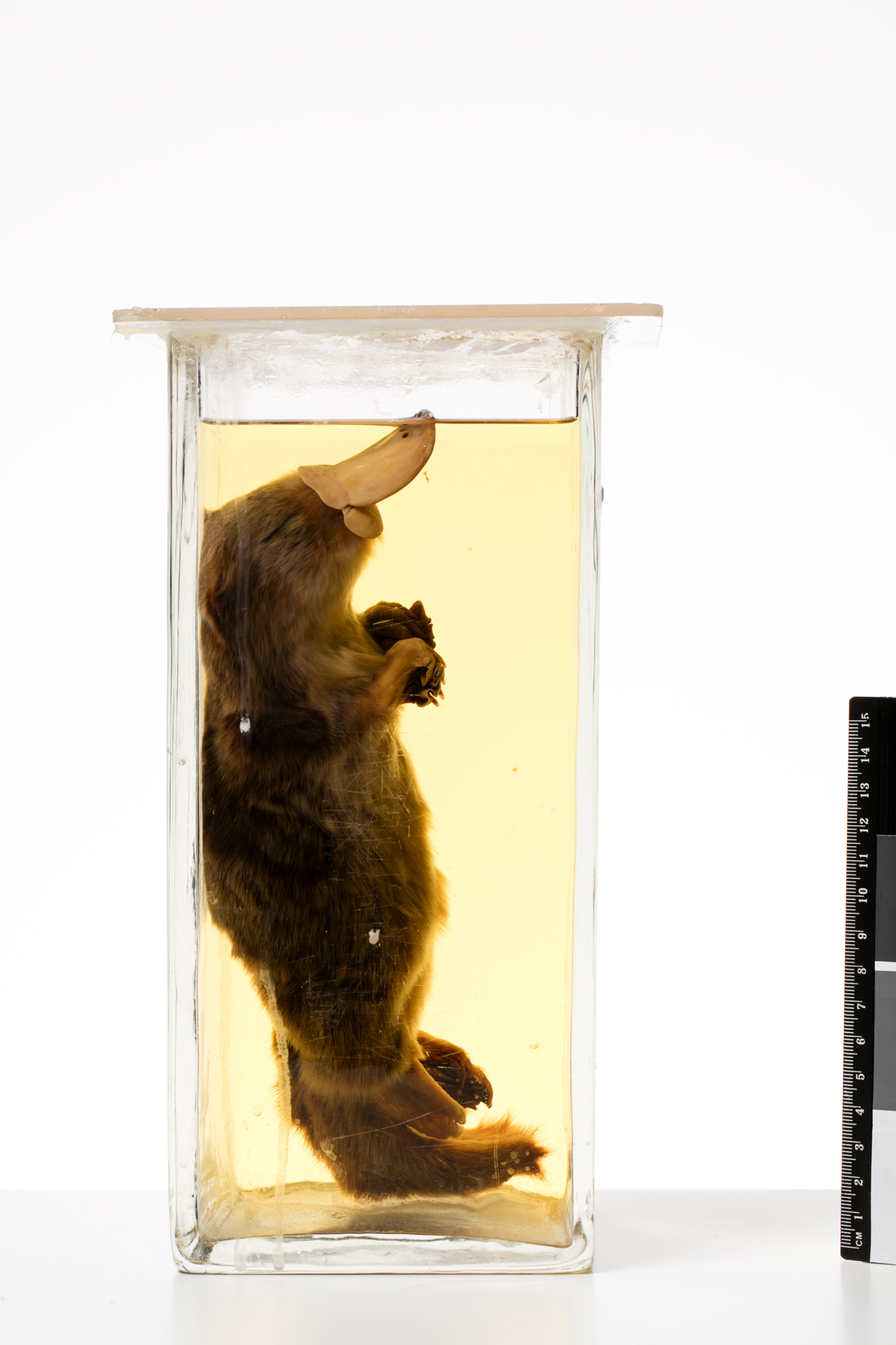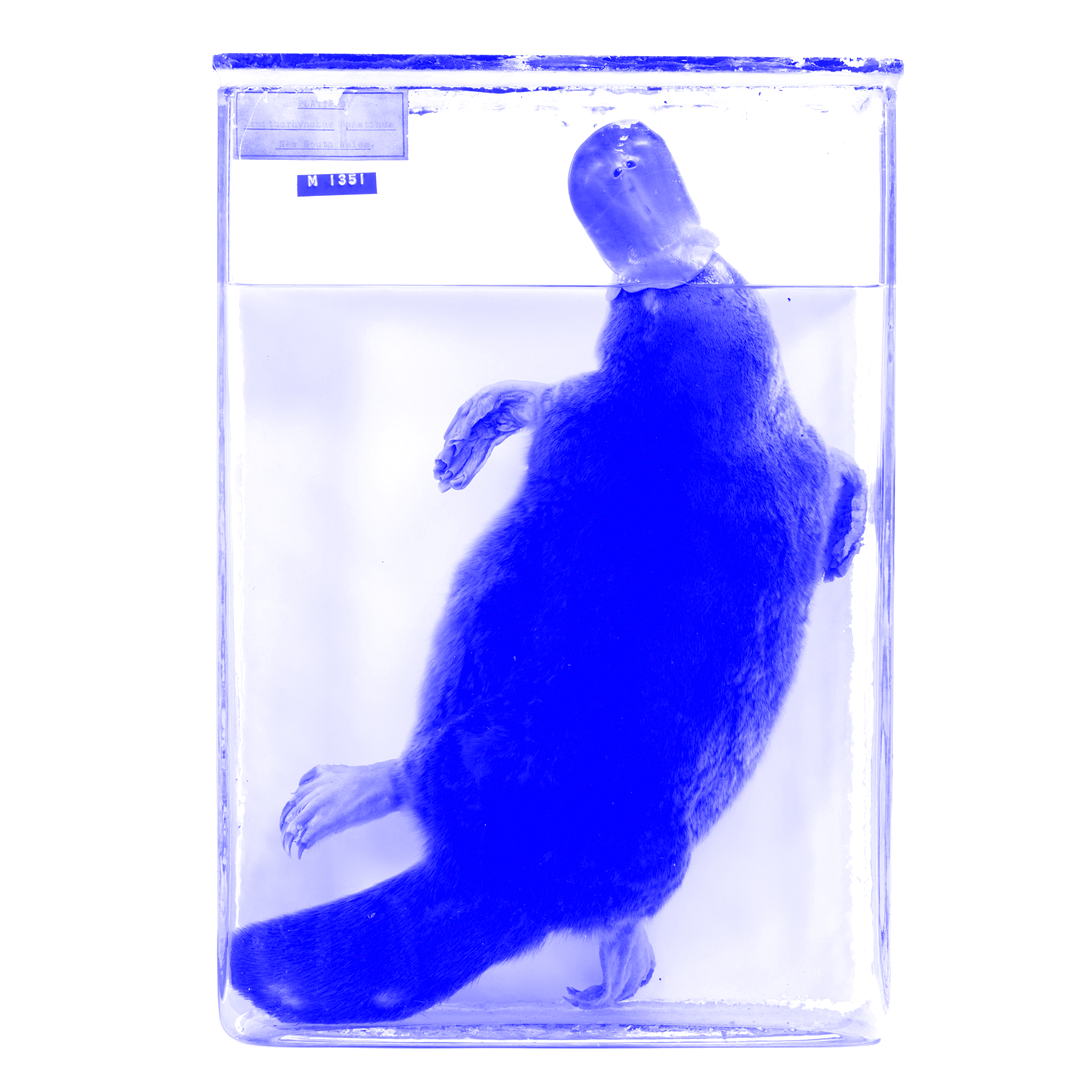

Looking at a rather forlorn platypus in a jar half-filled with formalin might not have you reflecting on the emergence of one of humanity’s greatest scientific advances or questioning the existence of god. Or even wondering about nipples. But it should.
The sighting by Charles Darwin of a humble platypus on the banks of a river in central New South Wales in 1836 left an indelible mark on him. These unique animals were already a source of considerable confusion and skepticism, with many believing that reports and even taxidermy specimens were a hoax.
But observing the platypus in its natural environment, and up close when his guide shot one, gave Darwin an opportunity to consider several things. He saw that their behaviours and general biology mimicked those of the European water voles he was familiar with. Observing two similarly adapted animals from unrelated taxonomic groups at opposite sides of the world was foundational to the realization that natural selection is central to driving the diversity of life on our planet.
But another consequence of his observations proved even more momentous. Many think it caused disquiet for Darwin as he questioned the theological tenets of the time. Darwin’s diary notes ““A Disbeliever in everything beyond his own reason, might exclaim, ‘Surely two distinct creators must have been (at) work; their object however has been the same & certainly in each case the end is complete.’” While he remained cautious in expressing his doubts about a creator, there’s little doubt that the theory he developed removed the need to invoke creation myths or supernatural beings to help us understand life on earth. This embracing of reason and science has subsequently given cause to a lot of people to question the existence of various deities and gods. And caused a lot of arguments.
And the nipples? Well, it’s no secret that all mammals produce milk with which they feed their offspring. It’s literally where they get their name from. They produce milk in their mammary glands and nearly all of them deliver it through some type of nipple, an effective way to get the milk to hungry babies. But the platypus, not content with its status as one of the few egg-laying mammals, does things differently. They lack nipples, and instead their milk oozes from mammary gland ducts and is lapped up by puggles from grooves on their skin.
So it’s not unreasonable to stare to the enigmatic animal in the jar and reflect on how it inspired the enlightened knowledge that shapes our modern world. From the theory of evolution, to emboldening those with heretical thoughts to challenge dominant theological norms, it has a special place in our history.
But no nipples.

